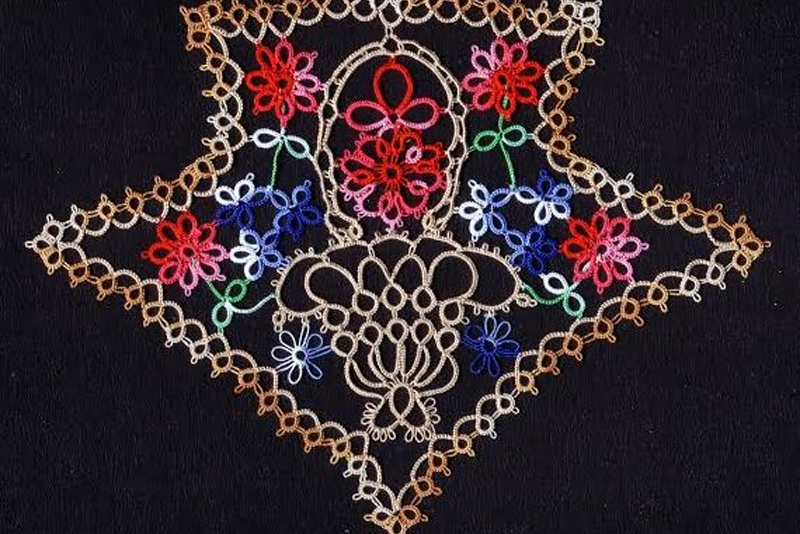I have had several responses to the recent article on using a needle as if it were a shuttle. And both have good points. (No pun intended)
Mark Myers wrote:
"Row 2 is the only reason that tatting with a needle(like a shuttle) would be the advantage. There are a couple other techniques that needle tatting has over shuttle. But this motif/doily can be done with a shuttle. Just takes forethought. Have a second shuttle ready when you are tatting up row 1. When making the picot of the outer rings in row 1, at first make it a large loop of thread and wait to continue. Start row 2 with second shuttle with a finished ring, pass shuttle through picot loop of thread from row 1 and lay sh#2 aside. Continue with picot making it smaller and finish that ring in row 1. Do this for the remainder of row 1 and 2 consecutively."
That is certainly true. This doily could be shuttle tatted but the article was deliberately focusing on the process of using the needle as if it were a shuttle. The discussion started with a photo from Becky who was puzzling on how it was done. I found no reference diagrams for this procedure except for the old Riego hand illustrations. So, Jennifer kindly made the diagrams and then thought up a small pattern that our tatters could use for practice.
And Donna Kelly wrote:
"I have been tatting with shuttle and needle for many years. Using a blunt needle is not advisable because the end of the needle is wider than the stem. Use a tatting needle instead because it is tapered the same on both ends. The tatting needle width should match the width of the thread you are using."
Yes, in today's needle tatting the type of needle is very important. You are quite correct in saying that a blunt tapestry needle's eye is larger than the shank and thus, not good for needle tatting purposes. However, that is only true for needle tatting in which the ds are wrapped onto the needle. This technique of using a blunt needle as if it were a shuttle developed very early on in tatting but was not used a lot.
Our discussion on the use of the needle as if it were a shuttle developed from a discussion about the doily attached. If you study the inner rows, you will see that a needle was necessary. This pattern could also be needle tatted as we do today or shuttle tatted if a different method is used to make the joins as shown in the diagram.
I hope you all found the article interesting. I welcome your suggestions for future topics. And I would love to have a pattern to share with the tatters if any has an original one to share.

The original doily which started the discussion.

Note the inner rows where one row joins to the previous row.
Here's the latest article from the Tatting site at BellaOnline.com.
Tatted Jewelry from Vintage Patterns
Combined two wrapped bangle pieces into one bracelet. Select any vintage edging or insertion and use multiple colors as well as adding bling with beads, crystals and baubles joining to both bangles as you tat.
http://www.bellaonline.com/articles/art16825.asp
Please visit tatting.bellaonline.com for even more great content about Tatting.
To participate in free, fun online discussions, this site has a community forum all about Tatting located here -
http://forums.bellaonline.com/ubbthreads.php?ubb=postlist&Board=39
I hope to hear from you sometime soon, either in the forum or in response to this email message. I thrive on your feedback!
Have fun passing this message along to family and friends, because we all love free knowledge!
Georgia Seitz, Tatting Editor
http://tatting.bellaonline.com
One of hundreds of sites at BellaOnline.com







